Salads
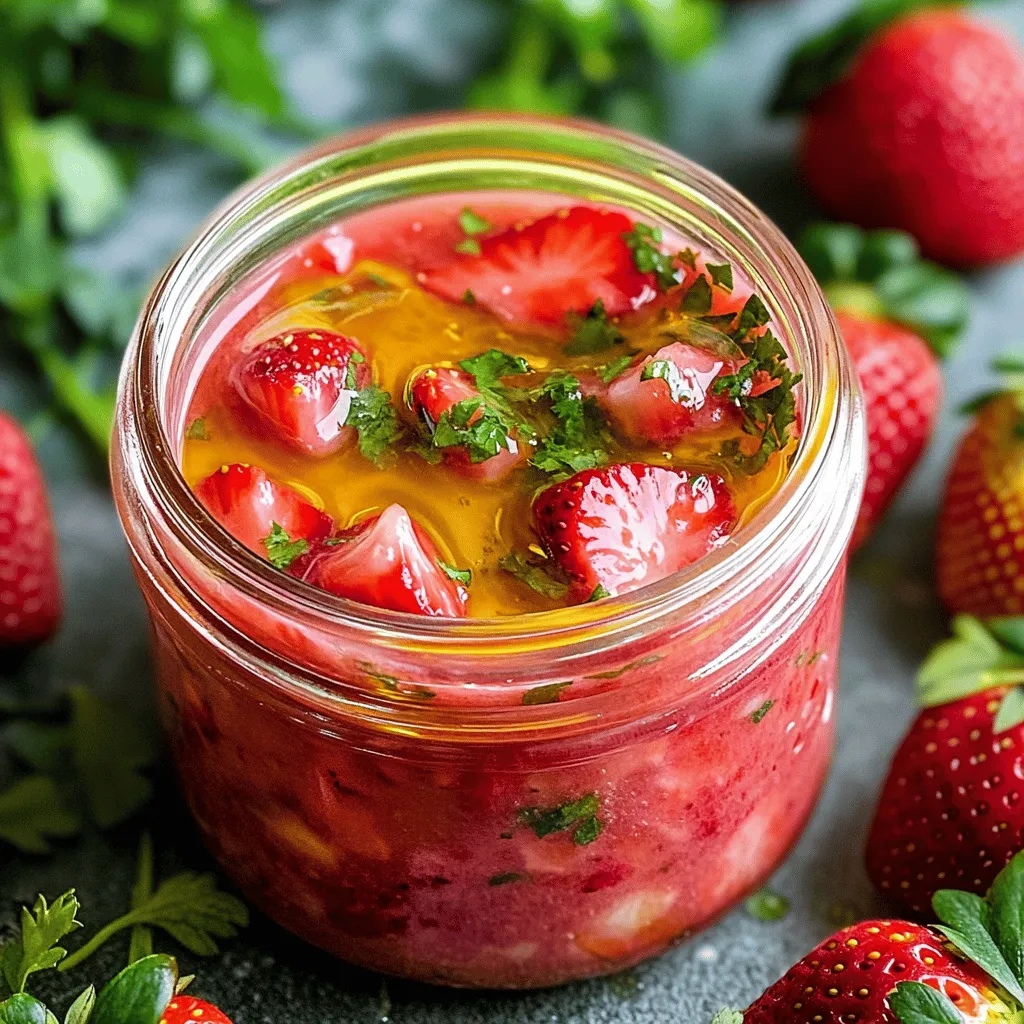
Homemade Strawberry Vinaigrette Easy Flavor Boost
Are you ready to elevate your salads with a burst of fresh flavor? This Homemade Strawberry Vinaigrette is simple, delicious, and made with just a
![- 4 cups kale, stems removed and chopped - 2 medium beets, peeled and diced - 1 medium carrot, grated - 1/2 cup feta cheese, crumbled - 1/4 cup walnuts, toasted and roughly chopped - 1/4 cup dried cranberries - 1/4 cup extra virgin olive oil - 2 tablespoons balsamic vinegar - 1 teaspoon honey - Salt and pepper to taste When making this kale salad, using fresh and quality ingredients is key. I always choose the best kale I can find. Look for kale that is bright green and has firm leaves. Avoid wilted or yellowing kale. Fresh kale adds a crisp bite to the salad. Beets bring sweetness and color to your dish. I prefer medium-sized beets because they roast evenly. When picking beets, choose ones that are firm and smooth. The skin should be free from blemishes. For carrots, select vibrant orange ones that are firm and crunchy. They add a nice crunch to the salad. Feta cheese should be creamy and crumbly. I love using a high-quality feta for its rich flavor. Walnuts can add a lovely crunch. Toast them lightly to enhance their taste. Dried cranberries bring a sweet contrast to the savory flavors in this dish. When it comes to olive oil and balsamic vinegar, quality matters. Use extra virgin olive oil for a rich flavor. Choose a good balsamic vinegar for a tangy kick. Honey adds a touch of sweetness to balance the salad. Lastly, salt and pepper enhance all the flavors. - Selecting the best kale: Look for vibrant, crisp leaves with no brown spots. - Choosing the right beets: Pick firm, smooth beets that feel heavy for their size. - Organic vs. conventional produce: Organic options often have better flavor and fewer pesticides. First, preheat your oven to 400°F (200°C). This temperature ensures the beets roast well. Next, prepare a baking sheet by lining it with parchment paper. This helps with easy cleanup. Now, take your diced beets and place them on the sheet. Drizzle them with 1 tablespoon of olive oil. Sprinkle a pinch of salt and pepper over the beets. This simple seasoning brings out their natural sweetness. Roast the beets for 25-30 minutes. Be sure to stir them halfway through. Once they are tender, remove them from the oven and set them aside to cool. In a large bowl, combine the chopped kale, grated carrot, roasted beets, feta cheese, walnuts, and dried cranberries. Each ingredient adds a unique flavor and texture. For the dressing, whisk together the remaining olive oil, balsamic vinegar, honey, and a dash of salt and pepper in a small bowl. This dressing balances the earthy flavors of the beets and the bitterness of the kale. Drizzle the dressing over the salad mixture. Toss gently to coat everything well. This step ensures each bite is flavorful. Let your salad sit for about 10 minutes. This resting time helps the flavors meld together. Taste the salad and adjust the seasoning if needed. For a beautiful presentation, serve the salad in a large wooden bowl. Garnish with extra walnuts and feta on top. This adds visual appeal and makes the dish inviting. You can also plate individual servings with a slice of lemon on the side for a pop of color. For the complete recipe, check out the Full Recipe. To get even cooking for your beets, cut them into similar sizes. This helps them roast at the same rate. Spread them out in a single layer on the baking sheet. Give them space so they can roast, not steam. If you want to save time, consider using pre-cooked beets. They are easy to find in stores and save you roasting time. Just slice them and add them to your salad. Don't be afraid to try different dressings. A simple lemon vinaigrette can brighten the flavors. You can also switch balsamic for apple cider vinegar for a fruity twist. For added flavor, try mixing in fresh herbs like parsley or dill. They can take your salad from good to great. Adding protein boosts the salad's nutrition. Grilled chicken, chickpeas, or quinoa are great options. You can also increase fiber by adding more veggies like bell peppers or avocado. These simple changes make your salad not only tasty but also filling. For the full recipe, check the [Full Recipe] section. {{image_2}} You can change up this salad based on what’s fresh. Try adding: - Roasted sweet potatoes for a sweet touch. - Shredded Brussels sprouts for a crunchy bite. - Sliced apples for a crisp flavor. Dressing can also vary with the seasons. Use a lemon vinaigrette in spring. For fall, try a maple mustard dressing. If you want a vegan salad, swap feta cheese for avocado. Creamy avocado gives a rich texture. You can also use nutritional yeast for a cheesy flavor. For dressings without honey, try maple syrup or agave nectar. These options keep the sweetness but stay plant-based. Adding grains like quinoa or farro makes the salad heartier. They give extra protein and fiber, making it more filling. Quinoa cooks quickly and adds a nutty flavor. Farro has a chewy texture and enhances the salad's depth. Both grains boost nutrition and make the dish more satisfying. Store any leftover salad in an airtight container. This keeps it fresh and crisp. Place it in your refrigerator. The salad stays good for about 2-3 days. After this, the kale may wilt. The beets can lose their texture, too. You can make this salad ahead of time. Just store each part separately. Keep the kale, beets, and dressing in different containers. This helps keep everything fresh. Use glass containers for best results. They help prevent odors and stains. You might wonder if you can reheat the salad. I recommend against it. The salad is best when fresh and cool. If you want a warm dish, try warming the beets before mixing. Just heat them gently in a pan and add to your salad. Remember to check out the Full Recipe for more tips! To reduce the bitterness of kale, try massaging it. Take the chopped kale and drizzle a little olive oil on it. Use your hands to gently rub the leaves for a few minutes. This softens the leaves and makes them taste sweeter. You can also add a bit of salt or lemon juice while massaging. Both help to cut the bitterness. Yes, you can use frozen beets! They are often already cooked and ready to use. Thaw them before adding to your salad. If they are not pre-cooked, steam or boil them for a few minutes until they are tender. Using frozen beets can save time and add convenience to your cooking. Feel free to get creative with your salad! You can add sliced apples for sweetness or avocado for creaminess. Adding chickpeas or grilled chicken boosts the protein. You can also toss in seeds like pumpkin or sunflower for a crunchy texture. Experiment with your favorite flavors! For the full recipe, check out the vibrant Kale Salad with Roasted Beets. In this blog post, we explored a tasty salad packed with fresh ingredients like kale, beets, and walnuts. We covered roasting the beets, assembling the salad, and enhancing its flavor. You learned tips for perfecting your beets and tried different dressings. Remember, you can swap in seasonal veggies or grains to keep it exciting. With the right storage and prep tips, you can enjoy this healthy dish several times. Now, it's time to enjoy your delicious salad and feel good about what you eat.](https://therecipehatch.com/wp-content/uploads/2025/07/3d718c5d-395a-41f5-8678-ecdb362b0e85.webp)
Kale Salad with Roasted Beets Fresh and Flavorful Dish
Welcome to your new favorite dish: Kale Salad with Roasted Beets! This vibrant salad is not just colorful; it’s full of flavor and nutrients. I
![For this flavorful balsamic chicken caprese salad, you'll need: - 2 boneless, skinless chicken breasts - 1 cup cherry tomatoes, halved - 1 cup fresh mozzarella balls - 2 cups fresh basil leaves These main ingredients create a colorful and tasty dish. The chicken adds protein, while the tomatoes and mozzarella bring freshness. The basil leaves add a fragrant touch. To dress the salad, gather: - 3 tablespoons balsamic vinegar - 2 tablespoons olive oil - Salt and pepper to taste This dressing ties the salad together with a tangy and rich flavor. Balsamic vinegar provides a nice zing, while olive oil adds smoothness. For seasoning, you will need: - 1 teaspoon garlic powder - 1 teaspoon dried oregano These spices enhance the chicken's taste. Garlic powder gives a savory depth, and oregano adds a classic Italian flavor. You can find the full recipe for extra details and specific steps. Start by marinating the chicken. This step adds flavor and keeps the meat juicy. Season the chicken breasts with: - 1 teaspoon garlic powder - 1 teaspoon dried oregano - Salt and pepper to taste Mix these spices together. Rub this mixture over the chicken. Let it sit for at least 15 minutes. This allows the flavors to soak in. For cooking, I prefer a skillet. Heat 1 tablespoon of olive oil in a large skillet over medium heat. Once the oil is hot, add the seasoned chicken. Cook it for about 6-7 minutes on each side. The chicken should reach an internal temperature of 165°F (75°C). To check for doneness, use a meat thermometer or cut the chicken to see if the juices run clear. Once done, remove the chicken from the skillet and let it rest for a few minutes. This helps keep it tender when you slice it. Now, it’s time to combine the salad ingredients. In a large bowl, mix together: - 1 cup cherry tomatoes, halved - 1 cup fresh mozzarella balls - 2 cups fresh basil leaves Next, make the dressing. In a small bowl, whisk together: - 3 tablespoons balsamic vinegar - 2 tablespoons olive oil - Salt and pepper to taste Now, slice the rested chicken and add it to the salad bowl. Drizzle the balsamic dressing over everything. Gently toss to mix all the ingredients. Your flavorful balsamic chicken caprese salad is now ready to serve! Enjoy it fresh and colorful. For further details, check the Full Recipe. To make your chicken juicy, start with good seasoning. I use garlic powder and dried oregano. After seasoning, heat olive oil in a skillet. Cook the chicken on medium heat. This usually takes about 6-7 minutes on each side. Always check the internal temperature. It should reach 165°F (75°C). This ensures that the chicken is safe and juicy. Let it rest for a few minutes. This keeps the juices locked inside. When mixing your salad, add the chicken last. This way, you keep the tomatoes and mozzarella intact. Gently toss the ingredients to avoid mashing them. To enhance flavors, use fresh basil leaves. They add a nice aroma and taste. You can also sprinkle a bit of salt over the salad just before serving. This makes everything pop. You can make your balsamic dressing with just two ingredients: balsamic vinegar and olive oil. If you want something richer, try adding a bit of honey or mustard. Homemade dressing usually tastes better, but store-bought can save time. Just check the label for quality. High-quality ingredients make a big difference. For the full recipe, check the link. {{image_2}} You can easily change the protein in this salad. If you want a lighter option, use tofu. Tofu absorbs flavors well and can make the dish vegan. Shrimp is another tasty choice. It cooks quickly and pairs nicely with the salad. For cheese, fresh mozzarella is classic. However, you can try feta or goat cheese for a tangy flavor. These cheeses add a unique twist and change the taste profile. Seasonal produce can elevate this dish. In summer, use ripe peaches or strawberries for a sweet touch. In fall, add roasted butternut squash or apples for warmth. These fruits bring freshness and color to the salad. You can also adapt this salad for special occasions. For a festive touch, add pomegranate seeds during the holidays. They add crunch and a burst of flavor. If you need a gluten-free dish, this salad is perfect as is. All ingredients are naturally gluten-free. Just double-check your balsamic vinegar for any hidden gluten. For a vegan version, swap the chicken for chickpeas or lentils. Both add protein and texture. Omit the mozzarella or use a plant-based cheese. These changes keep the salad delicious while meeting dietary needs. With these variations, you can make the flavorful balsamic chicken caprese salad suit any taste or occasion. Don’t forget to check the Full Recipe for detailed steps! To keep your Flavorful Balsamic Chicken Caprese Salad fresh, refrigerate it within two hours of serving. Use an airtight container to prevent moisture loss. Glass containers work well. They keep the salad fresh and let you see the colorful layers. You can freeze the salad, but it’s best to freeze the chicken alone. This will help maintain the quality of the other ingredients. Cut the chicken into pieces and place it in a freezer-safe bag. Remove as much air as possible before sealing. For reheating, thaw the chicken overnight in the fridge. Warm it in a skillet on low heat. Avoid microwaving, as it can dry out the chicken. In the fridge, your salad can last about three days. After that, the ingredients may begin to spoil. Look for signs like a sour smell or slimy texture. If the basil turns brown or the mozzarella looks off, it’s time to toss it. Enjoy your salad while it’s still fresh for the best flavor! For the complete recipe, check out the [Full Recipe]. To make chicken tasty, start with a good marinade. Use balsamic vinegar, olive oil, and spices. Let the chicken soak for at least 30 minutes. Garlic powder and dried oregano add great flavor. Salt and pepper are key too. Rub the spices directly on the chicken for more taste. Cooking the chicken on medium heat helps keep it juicy. Yes, you can prepare this salad ahead. Chop the chicken and veggies, then store them separately. Keep the balsamic dressing in a jar. When you’re ready to eat, mix everything. This keeps the salad fresh and crunchy. You can store the salad in the fridge for up to two days. This salad pairs well with many dishes. Try serving it with crusty bread or garlic knots for a filling meal. A side of roasted vegetables is great too. You can also serve it alongside a light soup. These sides complement the flavors of the salad nicely. For a drink, a glass of iced tea or sparkling water works well. For the full recipe, check out the detailed instructions above. This balsamic chicken Caprese salad is a crowd-pleaser. You learned about key ingredients like chicken and fresh basil. I shared step-by-step instructions for marinating and cooking the chicken. After that, we assembled our salad with flavor-packed dressing. Perfectly cooking chicken keeps it juicy. Don’t forget to store leftovers correctly, so they last longer. You can even swap ingredients based on the season or diet needs. This salad is easy to customize and fun to make. Enjoy creating your own version!](https://therecipehatch.com/wp-content/uploads/2025/07/7b5560e7-176e-4518-8dfe-8aa07bd72463.webp)
Flavorful Balsamic Chicken Caprese Salad Recipe
Are you ready to elevate your salad game? This Flavorful Balsamic Chicken Caprese Salad combines juicy marinated chicken, bright cherry tomatoes, creamy mozzarella, and fresh
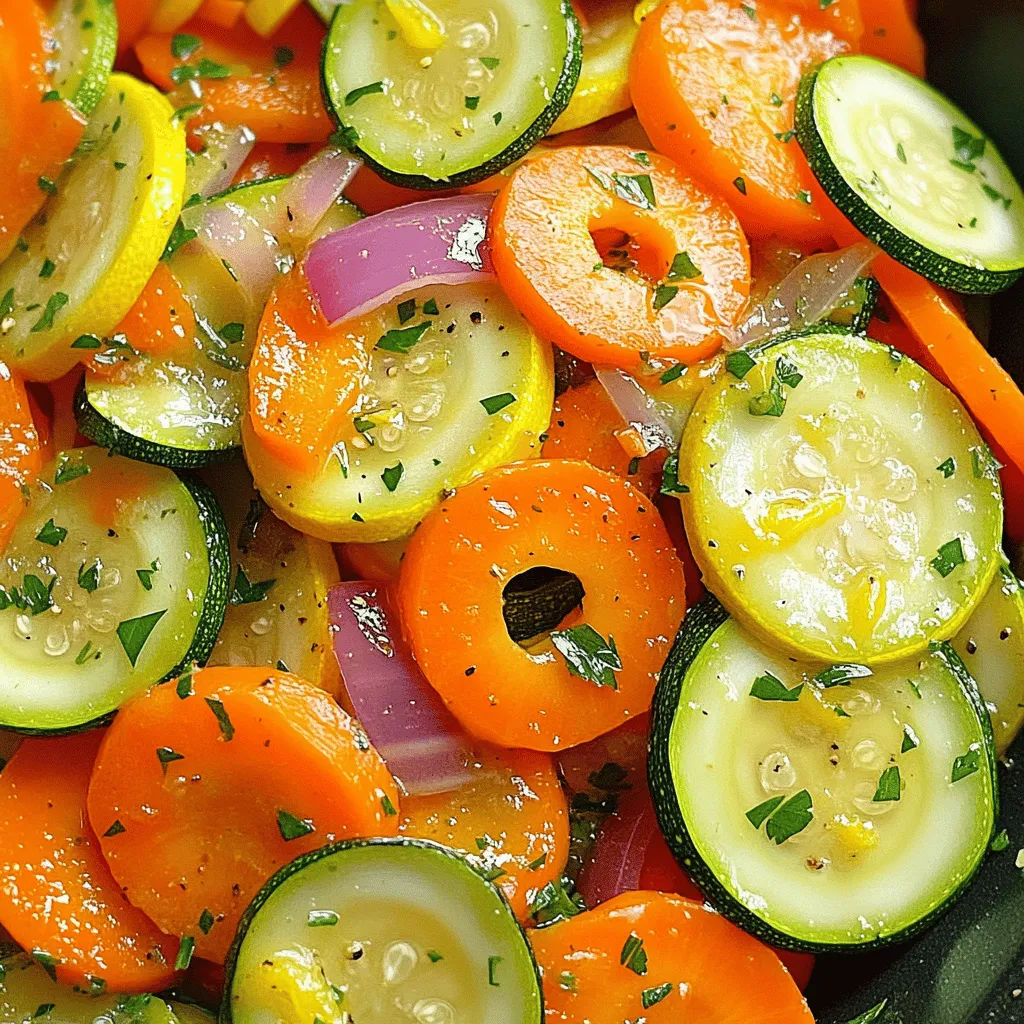
Sautéed Carrots and Zucchini Flavorful Healthy Dish
Looking for a quick, healthy dish that bursts with flavor? Sautéed Carrots and Zucchini is your answer! I’ll guide you through the simple steps to
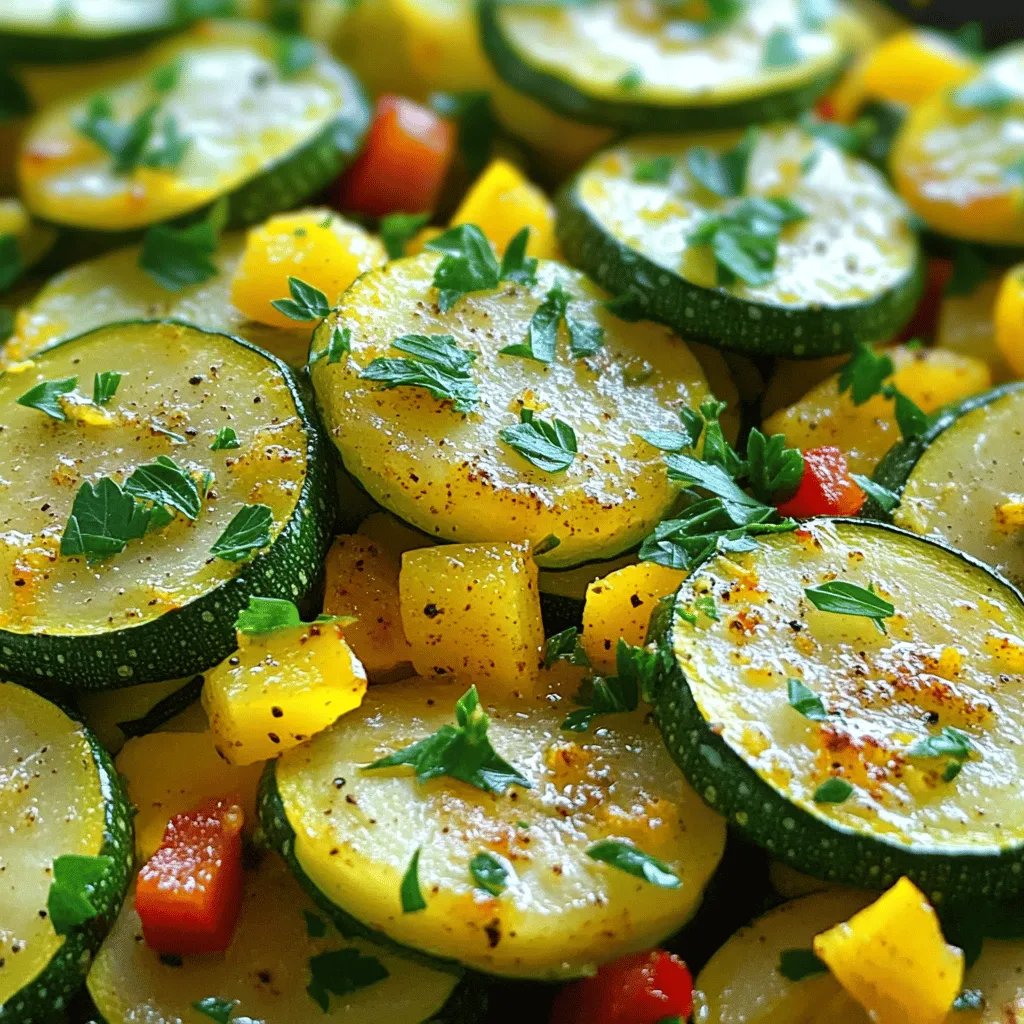
Roasted Zucchini and Summer Squash Flavorful Dish
Looking for a tasty way to enjoy zucchini and summer squash? This roasted dish is packed with flavor and super easy to make. You’ll learn
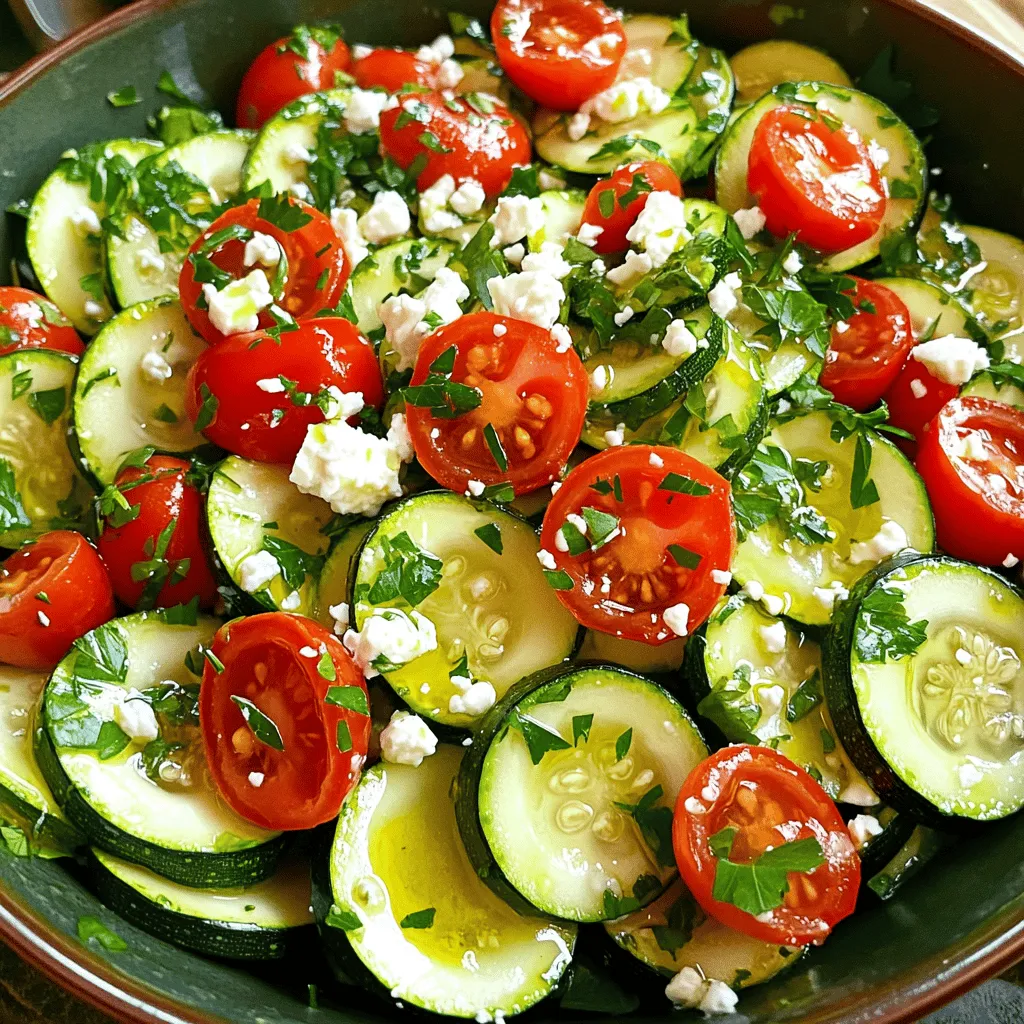
Marinated Zucchini Salad Fresh and Flavorful Dish
Are you ready for a fresh and tasty dish that bursts with flavor? This Marinated Zucchini Salad is an easy and vibrant addition to any

Flavorful Make-Ahead Zucchini Side for Easy Meals
Looking for a quick side dish that’s tasty and easy to make? Try my flavorful make-ahead zucchini side! This dish is perfect for busy weeknights
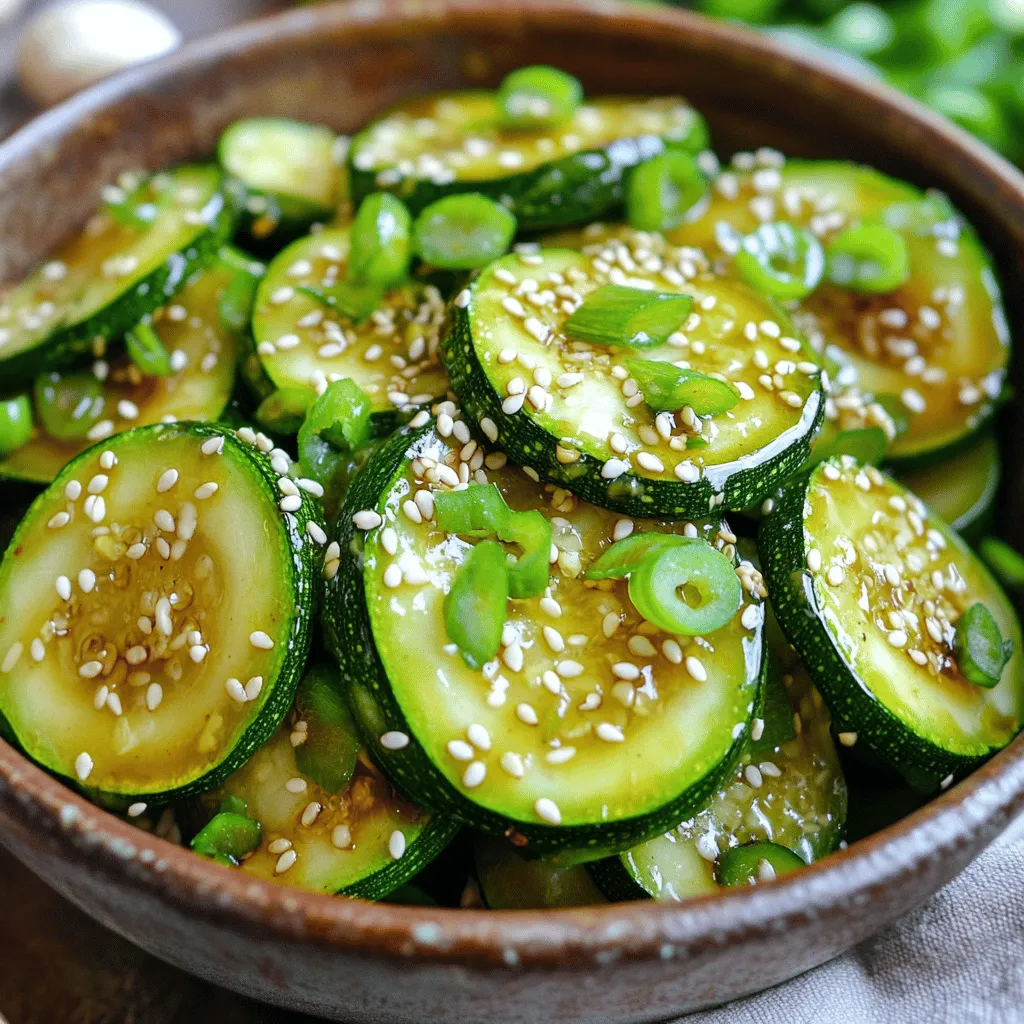
Japanese Steakhouse Hibachi Zucchini Flavor Explosion
Ready to experience a flavor explosion with Japanese Steakhouse Hibachi Zucchini? You’ll love this easy dish that packs a punch. It’s packed with sweet, tender
. Enjoy cooking! Start by gathering your ingredients. You need fresh asparagus and zucchini. Trim the asparagus to remove the tough ends. Slice the zucchinis into half-moons. Aim for even sizes. This helps them cook at the same time. Rinse the vegetables under cold water. Pat them dry with a clean towel. This step removes dirt and helps oil stick better. In a large mixing bowl, add the asparagus and zucchini. Drizzle olive oil over them. Next, add minced garlic, lemon zest, smoked paprika, salt, and pepper. Use your hands to toss the veggies. Make sure each piece gets coated. This mix adds a lot of flavor. You can also add Parmesan cheese if you like. Preheat the oven to 425°F (220°C). Spread the seasoned veggies in a single layer on a baking sheet. Avoid crowding the pan. Give them space to roast evenly. Roast for 15-20 minutes. Check for tenderness and slight crispiness. For added flavor, sprinkle Parmesan cheese during the last 5 minutes. Once done, garnish with chopped parsley. Enjoy your flavorful asparagus with zucchini! For the complete recipe, check out the Full Recipe section. To roast asparagus and zucchini perfectly, start with fresh, bright vegetables. Trim the ends of the asparagus to remove any tough parts. Slice the zucchini into even half-moons to ensure they cook at the same rate. Preheat your oven to 425°F (220°C) to get a nice crisp. Spread the veggies in a single layer on the baking sheet. This allows hot air to circulate and gives you that lovely, caramelized finish. Adding flavors is key to bringing out the best in your veggies. I love using garlic for its strong aroma. It complements the natural sweetness of asparagus and zucchini. Lemon zest brightens the dish and adds a refreshing touch. Try using smoked paprika for a hint of warmth and smokiness. If you enjoy cheese, sprinkle grated Parmesan on top near the end of roasting for a savory finish. Fresh parsley adds color and a fresh taste when you serve it. One common mistake is overcrowding the baking sheet. This causes steaming instead of roasting. Always give the veggies enough space. Another mistake is not preheating the oven. Roasting in a hot oven is crucial for that perfect texture. Also, don’t forget to toss the vegetables in oil and spices. This step ensures even coating and flavor throughout. Finally, keep an eye on the timer. Overcooking can lead to mushy veggies, so check them frequently. For more details, check the Full Recipe. {{image_2}} You can easily boost the protein in this dish. Chicken and shrimp work very well here. For chicken, use boneless, skinless breasts or thighs. Cut them into bite-sized pieces. Season them with the same spices. Then, roast them with the vegetables. For shrimp, use large, peeled shrimp. Toss them in with the veggies in the last five minutes of cooking. Both options add flavor and make this dish more filling. If you want to add more veggies, go for it! Bell peppers, carrots, or cherry tomatoes add color and taste. You can also use mushrooms for an earthy flavor. Just chop them into similar sizes as the asparagus and zucchini. Mix them in with the original recipe. This way, you keep everything balanced and tasty. Each veggie brings its own twist to the dish. To change the flavor, play with herbs and spices. Fresh basil or thyme can brighten up the dish. Dried oregano or rosemary gives a warm touch. You can also try a pinch of red pepper flakes for some heat. Just add a little at a time. Taste as you go to find your perfect mix. Experimenting with flavors makes this dish unique every time you cook it. For more ideas, check out the Full Recipe. To keep your leftover flavorful asparagus with zucchini fresh, place it in an airtight container. This will help prevent moisture loss and keep the veggies crisp. Store it in the fridge. It will stay good for up to three days. You can also wrap it tightly in plastic wrap if you prefer that method. When you are ready to enjoy the leftovers, avoid the microwave. It can make your veggies soggy. Instead, heat a skillet over medium heat. Add a splash of olive oil and toss in the asparagus and zucchini. Stir them for about five minutes until they are warm. This method helps keep the veggies crispy and flavorful. If you want to save your dish for later, freezing is a great option. Start by letting the veggies cool completely. Then, pack them into freezer bags, removing as much air as possible. Label the bags with the date. Your flavorful asparagus with zucchini can last about three months in the freezer. When you are ready to eat, thaw in the fridge overnight and reheat as mentioned above. For the full recipe, check out the instructions earlier in the article. Yes, you can use frozen asparagus or zucchini. Just note that the texture may change. Frozen veggies often hold more water. This can make them soggy when cooked. If you use frozen, try roasting them a bit longer. This helps them crisp up. You can serve this dish with many options. Grilled chicken or fish pairs well. Quinoa or rice adds a nice base. You can also enjoy it on pasta. Try it alongside a fresh salad for a balanced meal. You can tell the veggies are done by looking at their color and feel. Asparagus should be bright green and tender. Zucchini should turn golden and soft. You can poke them with a fork. If they feel soft but not mushy, they are ready. For the best results, check around 15 minutes into roasting. This is when they start to get crispy. Enjoy creating this flavorful asparagus with zucchini! For the full recipe, check out the details above. This blog post explored how to make flavorful asparagus with zucchini. We looked at essential ingredients, tools, and step-by-step instructions for cooking. I shared tips for roasting, flavoring, and variations like adding chicken or veggies. I also covered proper storage and answered frequently asked questions. Remember, using fresh ingredients and the right techniques makes a big difference. Enjoy making this dish your own, and have fun experimenting with flavors!](https://therecipehatch.com/wp-content/uploads/2025/07/f3bb7a0e-693a-45db-8128-0e9f0d1b8b3f.webp)
Flavorful Asparagus with Zucchini Easy Veggie Dish
Looking to brighten up your weekly meals? This Flavorful Asparagus with Zucchini Easy Veggie Dish is the answer! Packed with fresh flavors and simple steps,
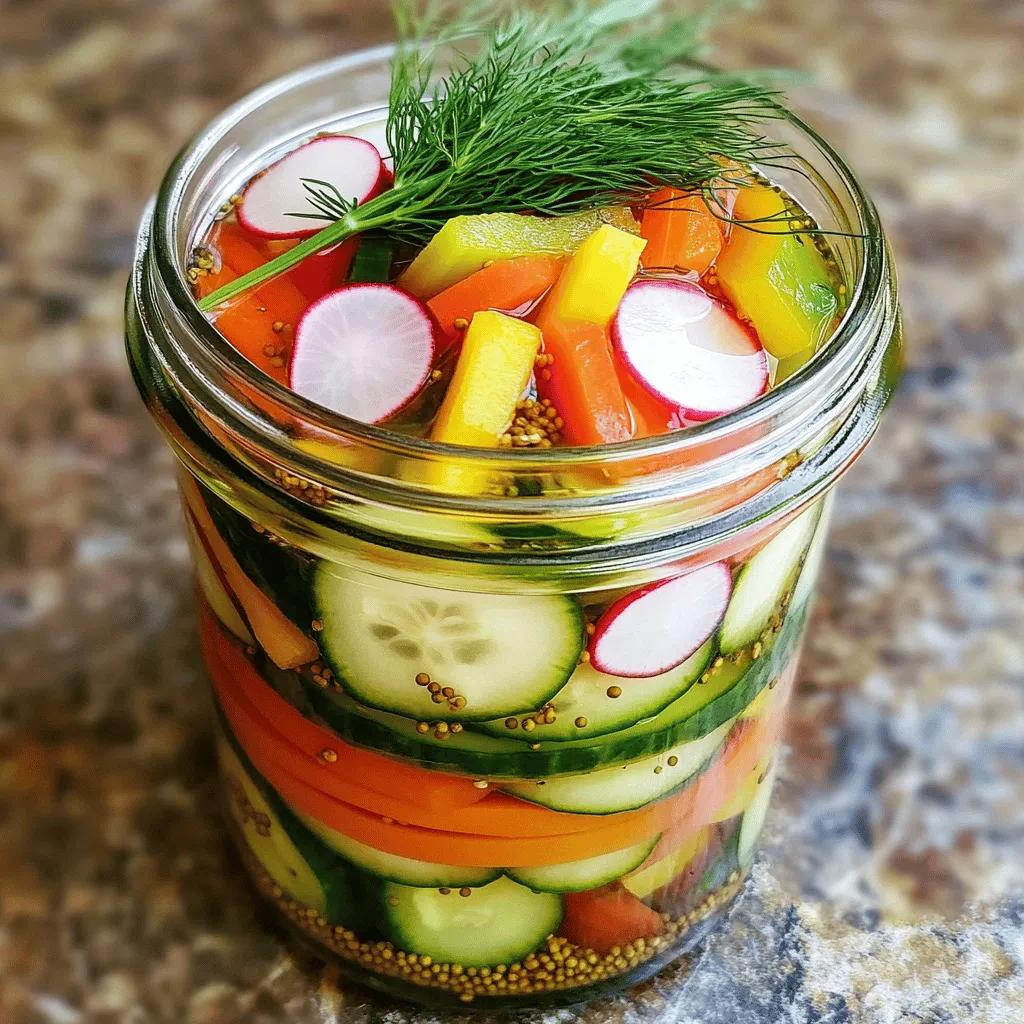
Quick Pickled Vegetables Easy and Tasty Recipe
Are you ready to add crisp, tangy flavor to your meals? Quick pickled vegetables are a fast and fun way to elevate your dishes. In